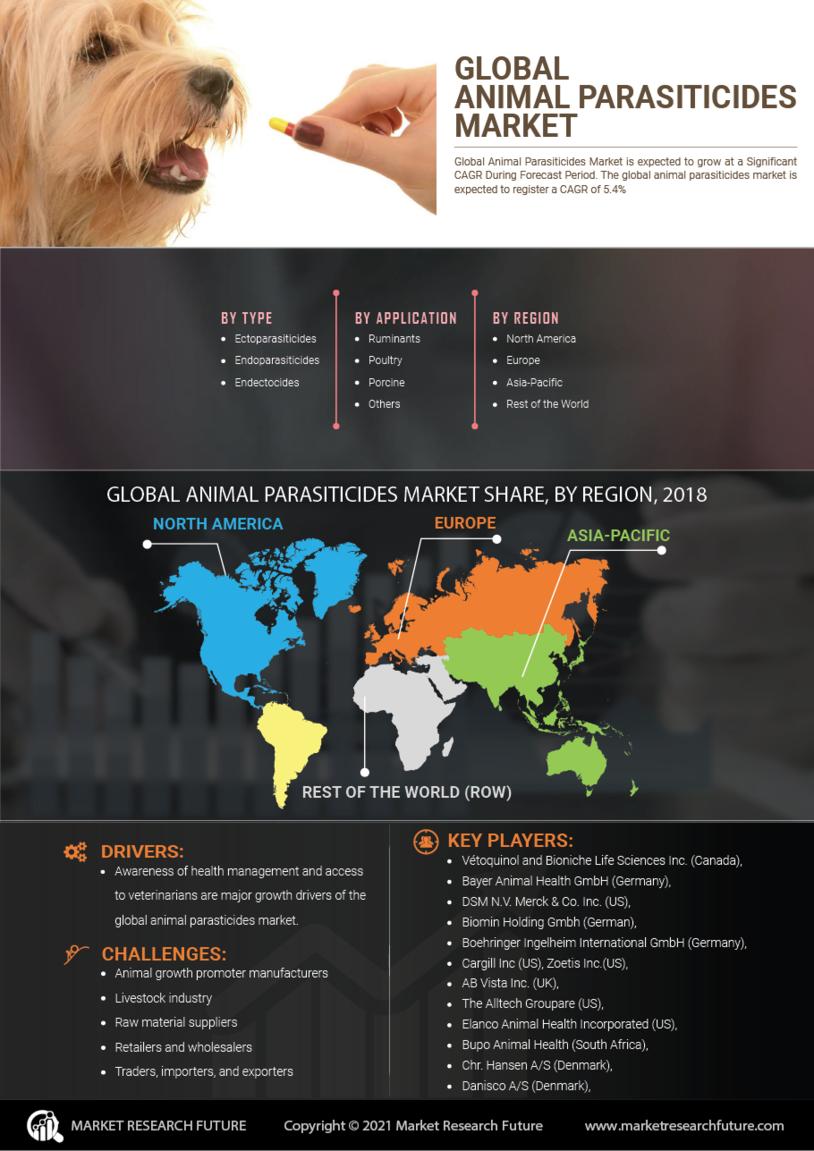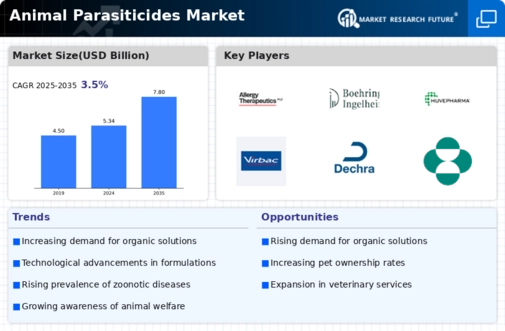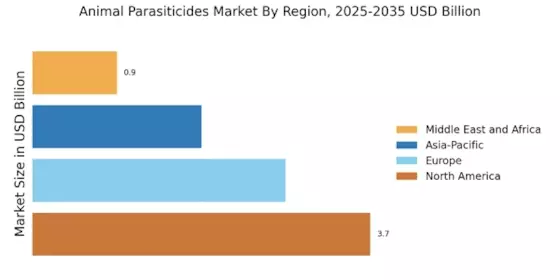Increasing Pet Ownership
The rise in pet ownership is a notable driver for the Animal Parasiticides Market. As more households adopt pets, the demand for effective parasitic treatments escalates. In recent years, pet ownership rates have surged, with estimates indicating that over 67% of U.S. households own a pet. This trend is mirrored in various regions, leading to a heightened awareness of pet health and wellness. Consequently, pet owners are increasingly seeking reliable parasitic solutions to ensure their pets remain healthy and free from infestations. This growing consumer base is likely to propel the Animal Parasiticides Market, as manufacturers respond with innovative products tailored to meet the needs of pet owners. Furthermore, the increasing willingness to spend on pet care products suggests a robust market potential for parasiticides.
Rising Livestock Production
The expansion of livestock production is a critical factor influencing the Animal Parasiticides Market. As the global demand for meat, dairy, and other animal products continues to rise, livestock farmers are increasingly investing in health management solutions, including parasiticides. Reports indicate that the livestock sector is projected to grow significantly, with an expected increase in production by over 30% in the next decade. This growth necessitates effective parasitic control measures to maintain animal health and productivity. Farmers are recognizing that investing in parasiticides can lead to improved yields and reduced economic losses due to parasitic infestations. Thus, the Animal Parasiticides Market is likely to benefit from this trend, as manufacturers develop targeted solutions to address the specific needs of livestock producers.
Awareness of Zoonotic Diseases
The increasing awareness of zoonotic diseases is a significant driver for the Animal Parasiticides Market. As public health concerns regarding diseases transmitted from animals to humans grow, there is a heightened focus on controlling parasites that can act as vectors for these diseases. Educational campaigns and research initiatives have underscored the importance of effective parasitic control in both pets and livestock. This awareness is prompting veterinarians and animal health professionals to advocate for regular parasitic treatments, thereby driving demand for parasiticides. The Animal Parasiticides Market is responding to this need by developing products that not only target common parasites but also address the broader implications of zoonotic disease transmission. This trend is likely to continue as health authorities emphasize the importance of preventive measures.
Regulatory Changes and Compliance
Regulatory changes and compliance requirements are pivotal drivers for the Animal Parasiticides Market. Governments and regulatory bodies are increasingly focusing on the safety and efficacy of parasiticides, leading to stricter approval processes. This regulatory landscape is compelling manufacturers to invest in research and development to ensure their products meet the necessary standards. Compliance with these regulations not only enhances product credibility but also fosters consumer trust. As the market adapts to these changes, there is a growing emphasis on transparency and the provision of detailed information regarding product ingredients and their effects. This trend is likely to shape the future of the Animal Parasiticides Market, as companies that prioritize compliance and safety are expected to gain a competitive edge.
Technological Innovations in Formulations
Technological innovations in formulations are reshaping the Animal Parasiticides Market. Advances in research and development have led to the creation of more effective and safer parasiticides. Innovations such as sustained-release formulations and targeted delivery systems are enhancing the efficacy of these products while minimizing potential side effects. The market is witnessing a shift towards formulations that are not only effective against a broader spectrum of parasites but also environmentally friendly. This trend is likely to attract environmentally conscious consumers and veterinarians who prioritize sustainable practices. As a result, the Animal Parasiticides Market is expected to see increased investment in R&D, leading to the introduction of novel products that meet the evolving needs of both pet and livestock owners.


















Leave a Comment